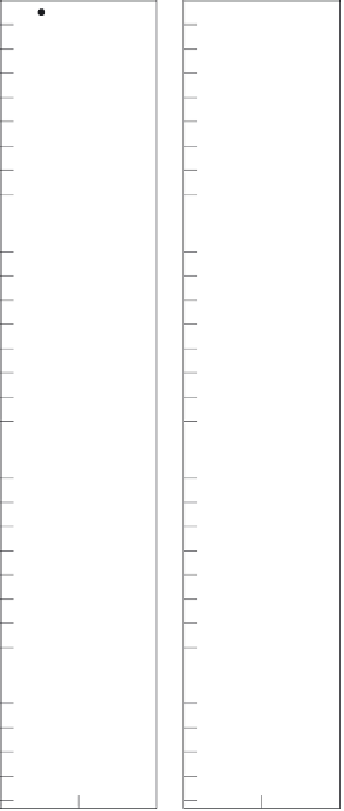Environmental Engineering Reference
In-Depth Information
wind velocities), 'fall time' (a longer fall time increases the likelihood of being
carried away on the wind) and 'wing loading' (mass per unit surface area - predicts
horizontal dispersal distance). Note the parallels with marine propagule dispersal
discussed in Section 4.2.4. Species with a combination of high release height, long
fall time and small wing loading should be the best wind dispersers. With this in
mind, Campbell's team calculated a composite 'dispersal ability by wind' as the mean
of the three variables, each scaled to values between 0 and 1 (Figure 4.5). They then
carried out one more data manipulation to derive an index of 'immigration potential
by wind'. This recognizes that immigration potential does not depend on dispersal
ability alone, but also on fecundity (the number of propagules produced by adult
plants) and the relative abundance of the plants adjacent to the exploited peatbog.
Fig. 4.5
Indexes of
wind dispersal ability
and of immigration
potential for a variety of
species of moss, herb,
shrub and tree that are
associated with peatbog
communities in eastern
Canada. (After
Campbell et al., 2003.)
Wind dispersal
ability
Immigration potential
via wind
Dicranella cervicullata
Pleurozium schreberi
Pohlia nutans
Polytrichum strictum
Sphagnum angustifolium
Sphagnum capillifolium
Sphagnum fallax
Sphagnum fuscum
Sphagnum magellanicum
Carex limosa
Carex oligosperma
Carex stricta
Drosera rotundifolia
Eriophorum angustifolium
Eriophorum vaginatum
Rubus chamaemorus
Sarracenia purpurea
Scirpus cespitosus
Andromeda glaucophylla
Aronia melanocarpa
Chamaedaphne calyculata
Kalmia angustifolia
Kalmia polifolia
Ledum groenlandicum
Rhododendron canadense
Vaccinium angustifolium
Vaccinium oxycoccus
Betula papyrifera
Betula populifolia
Larix faricina
Picea mariana
Pinus banksiana
0
0.5
1.0
0
0.5
1.0
Index





































































Search WWH ::

Custom Search